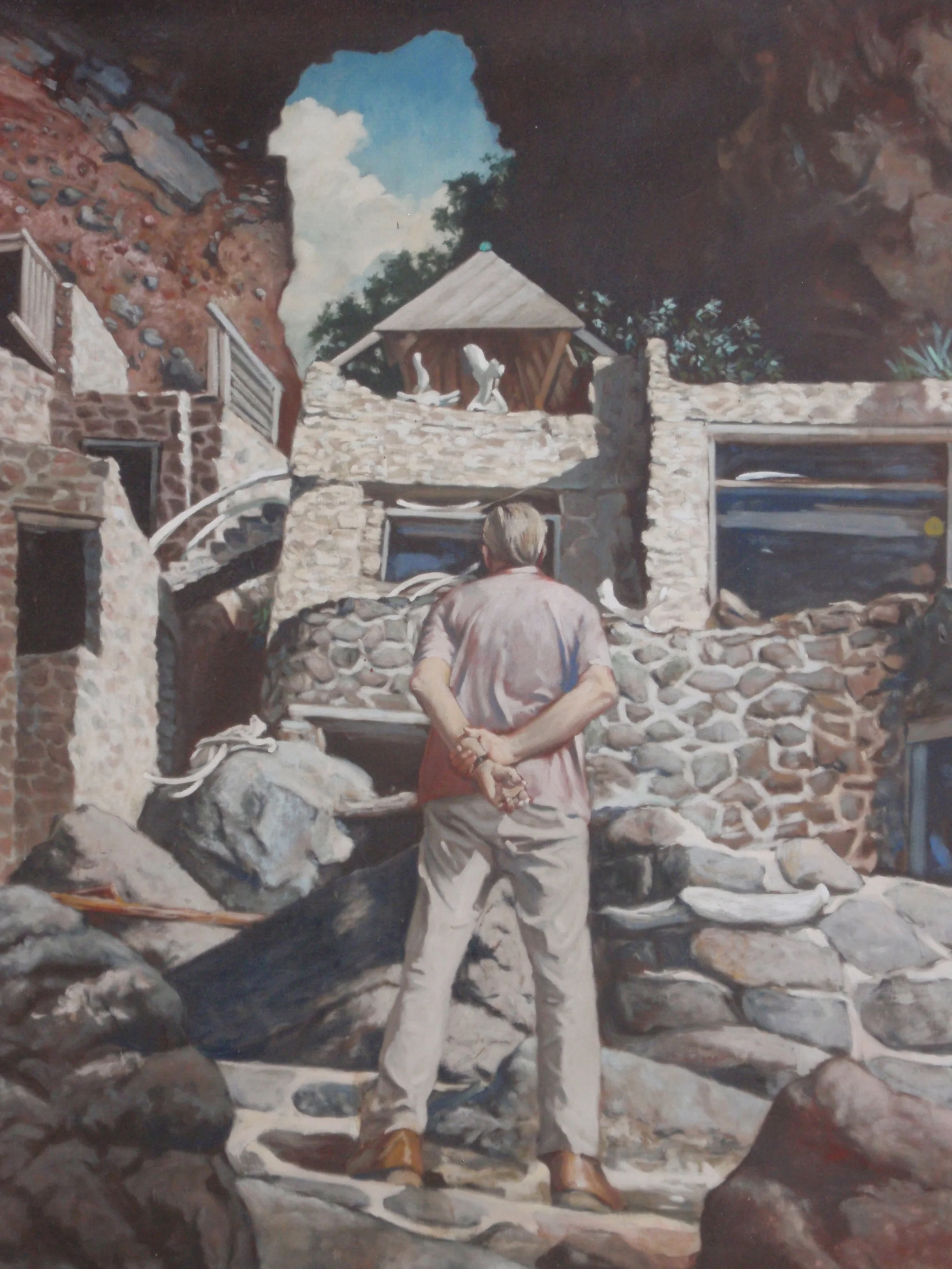Mission and History of Moonhole
Tom and Gladdie Johnston
Tom admires his handiwork
There was no road, just a watery path
We landed supplies by boat
Original Moonhole House
The Gallery
humpback whale sculpture
Leroy Ollivierre
HISTORY
Tom and Gladdie Johnston retired from the advertising business in the United States and moved to Bequia to run the Sunny Caribbee Hotel in the late 1950s. The family that owned the uninhabited western end of Bequia invited them to visit the giant natural rock arch known as Moonhole. At the time that end of the island was accessible only by footpath or by boat.
Tom and Gladdie trekked to the site, picnicked beneath the arch, and followed the rough path to the western tip of the island. The rock arch soon became their favorite spot on Bequia.
Tom lit on the idea of building a campsite underneath the rock arch. Landing supplies and building materials by boat and enlisting the assistance of some hardy men of Paget Farm, he began building, stone by stone. With no formal training as an architect, Tom relied on plans he sketched in the sand and a trial-and-error approach to construction. He picked up whalebones, driftwood and shells and incorporated them into the structure. The campsite soon evolved into a house with a working kitchen, dining area and bedrooms. After much cajoling, Tom eventually convinced Gladdie they should make Moonhole their home.
The Moonhole house caught the attention of curiosity-seekers and Tom’s reputation spread far and wide. Many publications, including The New York Times, National Geographic Society Publications, and Sports Illustrated, featured Tom's creations at Moonhole. At the urging of friends, Tom agreed to build houses for them. He aimed to develop the Moonhole property as what he called a "people preserve."
Tom and Gladdie formed Moonhole Company Limited in 1964 and transferred title to the lands to the company. Working side by side with carpenters and masons from Paget Farm over thirty years, Tom built sixteen more houses, a commissary and office, living quarters for the burgeoning Moonhole staff, and a Gallery where Moonholers congregated every Sunday.
Rather than cut down trees, Tom built around them. Trees still grow up through the middle of living rooms, bedrooms and decks. Every house was built with stones harvested from the land. Stone paths provide access to all houses, as Tom would not countenance putting a road into the property. Solar panels now power most houses and rain collected in huge cisterns supplies water.
The Johnstons presided over the Moonhole community for more than 40 years with an indomitable spirit of "Happiness Now!" Gladdie took care of business matters, tempering with common sense some of Tom’s creative urges. An accomplished artist, Tom created scrimshaw sculptures from the bones of whales captured by Bequia whalers. His sculptures adorn houses at Moonhole and around the world.
Tom and Gladdie were devoted to the people of Paget Farm, who built and staffed Moonhole. The Johnstons provided not only jobs, but also assistance with medical and educational expenses. They set up a private charity called Moonhole Friends, Inc. which continues to help needy persons in Bequia today.
Where – Western tip of Bequia
When – Founded in 1964
How - Constucted from native hardwoods and rocks from the site by Bequia masons and carpenters
Design – Tom Johnston
Land area – 30 acres
Houses – 17
Staff - 15 full-time
ACTIVITIES
Swimming
Beachcombing
Scuba Diving
Snorkeling
Hiking
Kayaking
Land Excursions
Fishing
Sailing trips
Tom Johnston
a path
Tom Johnston
Steps below Agnew-Hall House
Moonhole Lower Bight
Summer sun sets outside Moonhole









